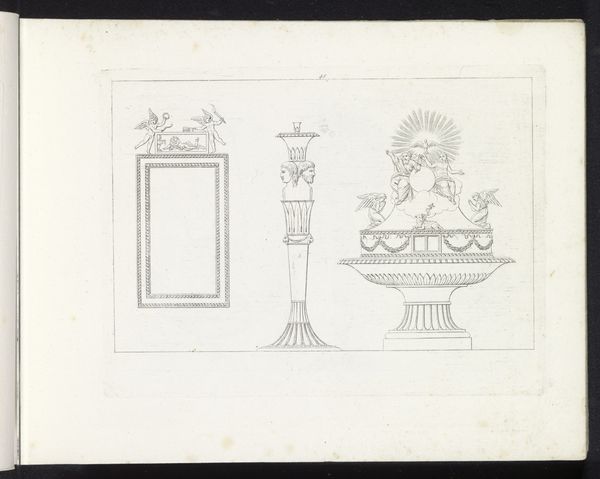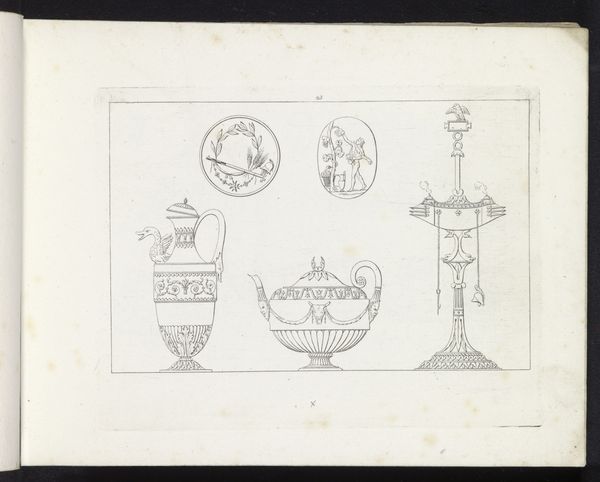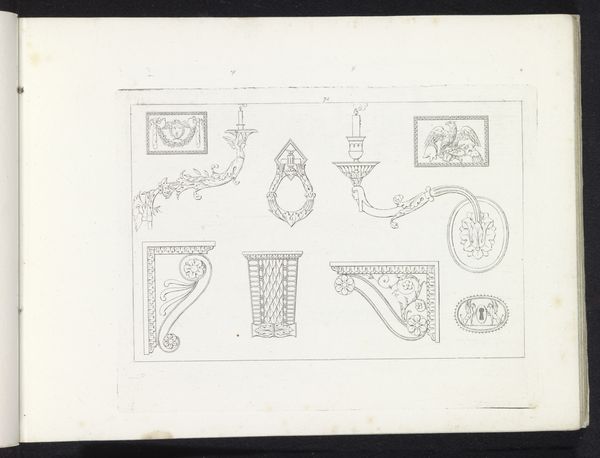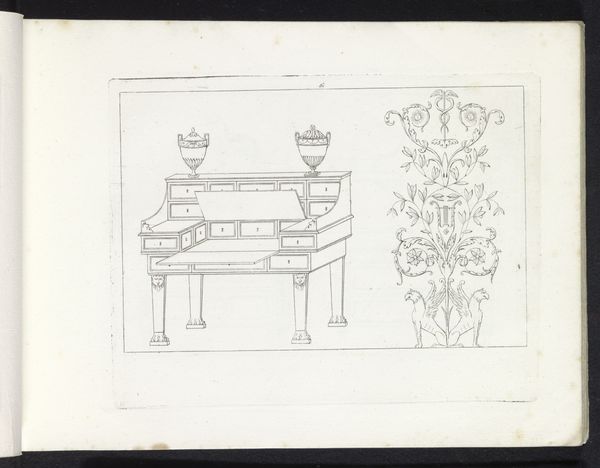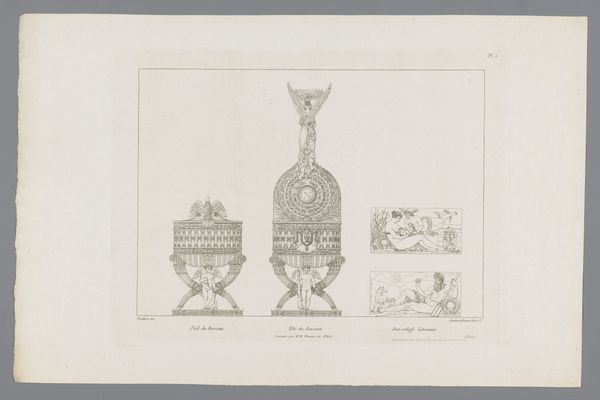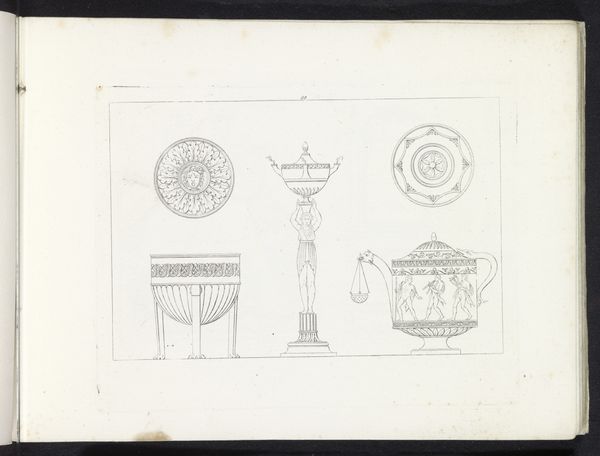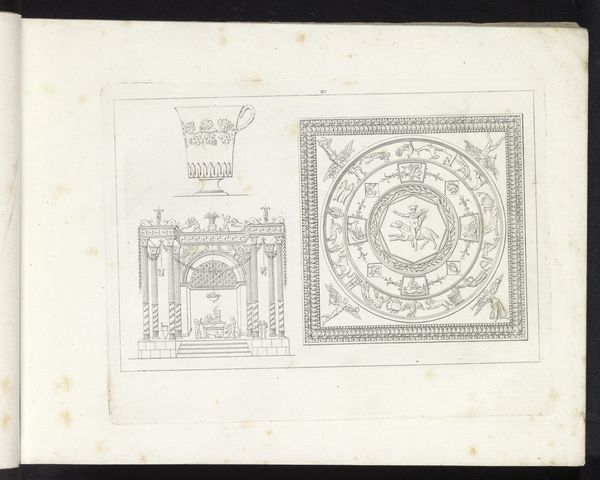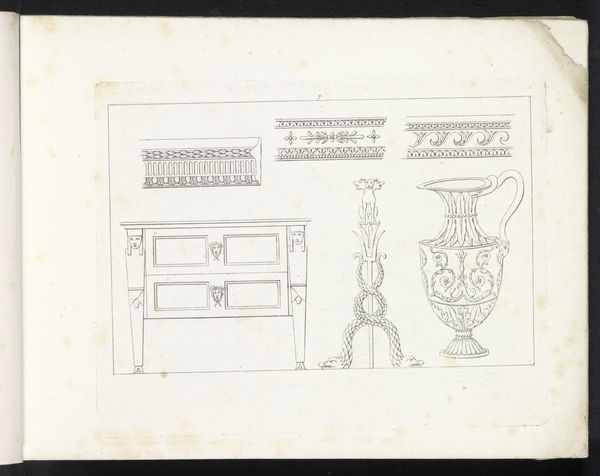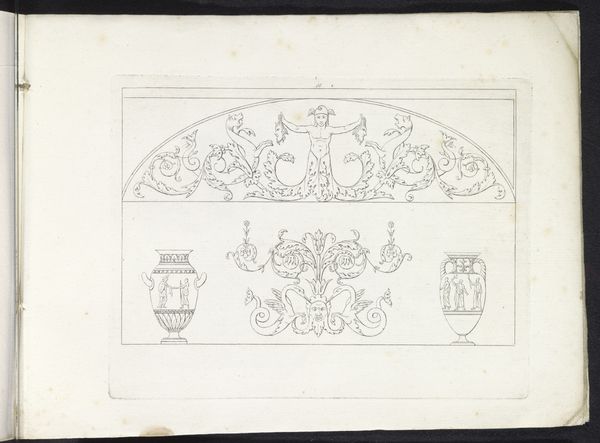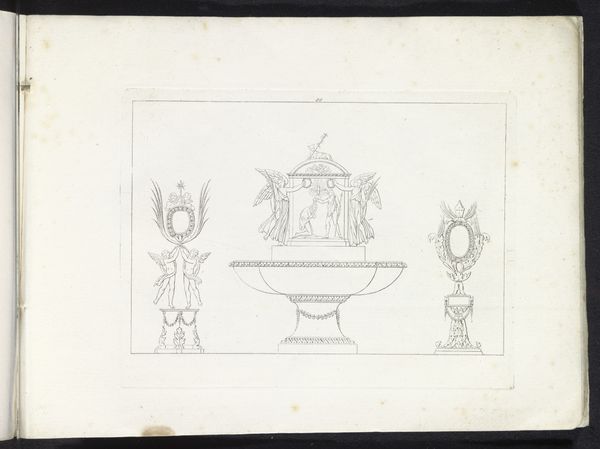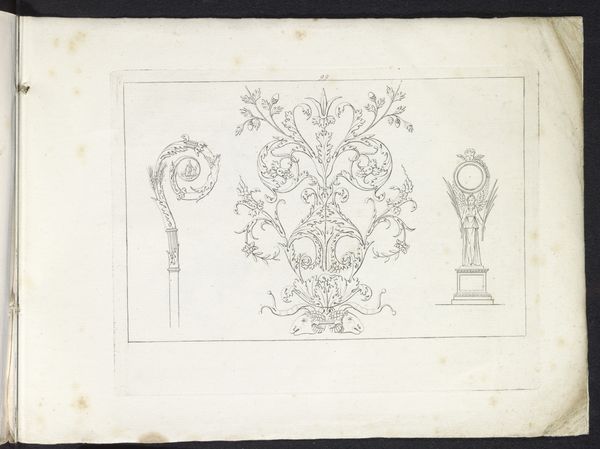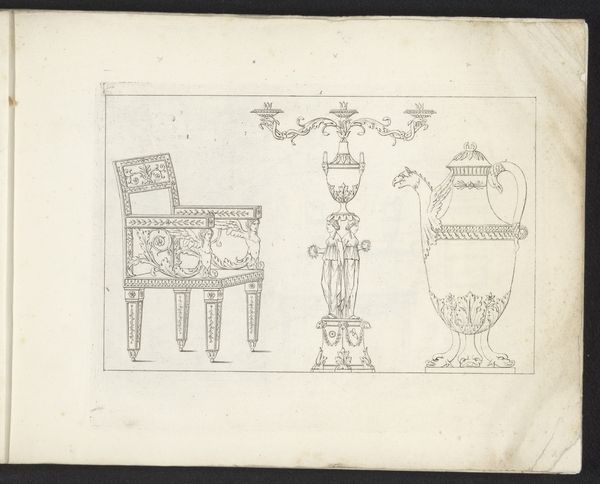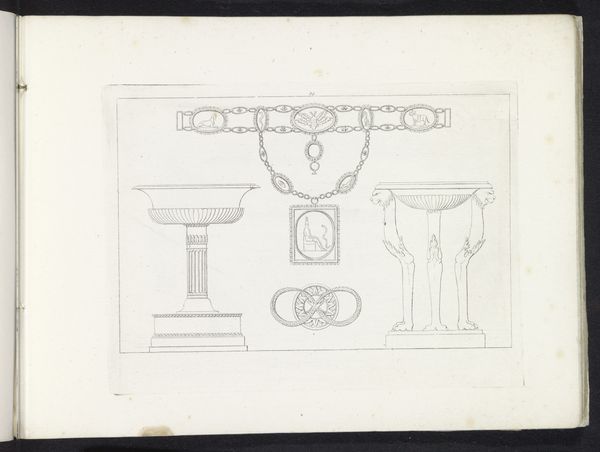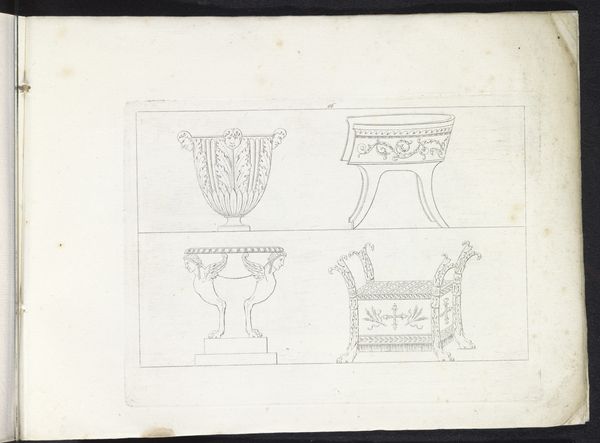
drawing, paper, ink, pen
#
drawing
#
neoclacissism
#
pen sketch
#
paper
#
ink
#
geometric
#
pen-ink sketch
#
pen work
#
sketchbook drawing
#
pen
#
decorative-art
Dimensions: height 165 mm, width 216 mm
Copyright: Rijks Museum: Open Domain
Editor: Here we have a pen and ink drawing titled "Twee stoelen, twee sloten en een ornamenteel medaillon op voetstuk" – that's "Two chairs, two locks and an ornamental medallion on a pedestal" in English. It's by Pietro Ruga, created in 1817. I’m struck by how clean and precise the lines are; it's like a page torn straight out of a furniture catalogue from the period. What can you tell me about this piece? Curator: Indeed. Given the neoclassical style, and its detailed nature, it is likely a preparatory sketch intended for a patron to visualise potential commissions, perhaps for interior decoration. The clean lines emphasize form and utility, reflecting the Enlightenment’s influence on art. The presence of the locks along with the medallions and furniture suggests a rising concern for private property and the creation of spaces signifying wealth and status. Notice how the furniture design echoes ancient Greek and Roman forms? Editor: Yes, I see that, the chair legs especially. So, was Ruga responding to specific social changes, thinking about who would ultimately own these pieces? Curator: Absolutely. Think of the rising merchant class at this time. They were eager to display their wealth and emulate the aristocracy, and designers like Ruga were there to supply them with objects and styles conveying status. Are these designs inherently political then, reflecting those societal power structures through imagery? Editor: That's fascinating! It's not just about aesthetic choices; it's about making a statement about who you are and where you stand in society. Curator: Precisely. And the museum, displaying such an image centuries later, what socio-political story does *it* want to perpetuate? It's worth considering, isn't it? Editor: Definitely gives me a lot to think about – thanks for sharing that perspective!
Comments
No comments
Be the first to comment and join the conversation on the ultimate creative platform.
